Have you been breaking your head to understand damage stability?
Not only this topic is difficult to understand, it is boring too. I know and I understand.
But boring topic cannot be the explanation of not knowing what we ought to know in the real world, on the high seas.
In 2010, Paris MOU and Black Sea MOU carried out a concentrated inspection campaign on tanker damage stability.
At the end of this campaign, Pat Dolby, co-ordinator of this CIC commented,
The most significant finding from the campaign was that 16.2% of tankers that were inspected, the master could not demonstrate that the ship was complying with damage stability.
16.2%. That is a huge number that definitely shows that there is a void in understanding this topic.
So today, let us discuss and demystify this topic of damage stability.
Why damage stability?
Do you remember that scene from the movie “Titanic”, where after the ship hit the iceberg, the naval architect lays down the ship’s plans in front of the captain?
While he was trying to brief the captain about the situation, the captain just had this one question.
How much time do we have?
And he said, an hour, two at the most.
How did he arrive at this number and how was he sure that an unsinkable ship is going to sink?
I will answer that question later but that is what damage stability is all about. All we are interested in is knowing that after an incident if the ship will remain afloat or sink?
All the rules about damage stability are trying to keep the ships safe even after one or more compartments are breached.
Consider this.
You have two ships both identical in every respect but the first one has only one tank (or cargo hold) and the second one has two tanks (or cargo holds).
Which one do you think is safer? Easy answer, right?
The one with the two cargo tanks.
This is because if one compartment is flooded, the first ship will have 100% of the cargo space flooded. The second ship would still have 50% of the cargo space intact.
What I am trying to prove here is that more the subdivisions of the ship, safer it would be.
But the ship owners cannot divide the cargo spaces in 20 or 50 compartments. This would mean the use of more steel, more money to build the ship and lesser cargo space to use.
Shipowner cannot build a ship with just one compartment either. That is too unsafe.
So how many minimum subdivisions a ship must have?
All in all, there are three approaches to building a ship that can withstand damage to its compartments.
All the three approaches for damage stability are just aiming to find that answer. So let us discuss each of these approaches of damage stability.
1. Floodable length and factor of subdivision
This is an old approach but it is still important to discuss this because this approach lays the foundation to understand damage stability.
In this approach, the number of subdivisions required is calculated by knowing the floodable length along the ship.
Floodable length is the length of the compartment which if flooded will cause the ship to sink up to the margin line.
Let us understand this by building a ship.
We have a ship and we need to put subdivisions (bulkheads) to it to divide the ship into compartments.
We create one compartment in the midship by placing two bulkheads (let us mark this bulkhead as A & B).
The length of this compartment (Length AB) need to such that if this compartment is flooded, the ship will sink to a point where margin line is just submerged.
This is the floodable length at this point.
Now we want to place another bulkhead aft of midship. Again this bulkhead needs to be at a location (C) such that if compartment AC is flooded, the ship will sink to a point where margin line is just submerged.
And with this same approach, we can decide the location of other bulkheads along the ship’s length.
When calculating the floodable length, One thing that we need to keep in mind is that we need to flood the compartment to the full width of the ship even when we have or plan to have a centerline bulkhead.
Floodable length Curve
Our ship is ready now with all the compartments it needs. This ship would not sink if any one compartment is breached and flooded.
But if you would have noticed I have drawn larger compartment in the midship area. This means that I have shown large floodable length closer to the midship area.
This is because if the midship compartment is flooded, the ship will sink bodily (with least trim).
But as we move away from the midship, the flooded compartment will trim the vessel. This would make a smaller compartment to sink the ship up to the margin line.
So the bottom line is that the floodable length changes along the length of the ship.
Floodable length curve represents the maximum floodable length of the ship along the ship’s length. This curve is obtained by vertically plotting the floodable length along the ship’s length.
Checking the damage stability compliance: Floodable curve method
So far I have given the basic idea of what floodable length is and how floodable length curve is obtained.
Ships, that are required to comply with this method of damage stability would be provided with the floodable length curve.
The damage stability rules for the ships would be something like…
The ship should be able to survive the breach (flooding) of any one (two or three) compartment.
To check if the ship would comply with this damage stability requirement, the floodable length curve is superimposed on the ship’s plan.
Then one compartment by one, the damage stability compliance is checked. The length of the assumed damaged compartment is plotted vertically at the center of the compartment.
If this length is below the floodable length curve, this compartment complies with the damage stability requirements of one compartment standard.
Same is done with other compartments.
As we can see, all the length triangles are within the floodable length curve of the ship. This means that this ship complies with one compartment standards of the damage stability.
Now let us check the damage stability compliance for two compartment standard. In this case, we will assume the flooding of two compartments and compare the length triangle with the floodable length curve of the ship.
Again same is done assuming flooding of any two adjacent compartments.
Clearly, this ship does not comply with damage stability requirements of two compartment standards.
If we need to comply with two compartment standards, this ship needs to have more compartments, the length of which need to be such that even when two compartments are flooded it will be below the floodable length curve.
Maybe the below subdivision of the ship will be able to satisfy the damage stability requirement for two compartment standard.
Let us check the damage stability compliance to two compartment standard.
As you can see, this ship is a two compartment standard ship now.
We can go on in a similar way if we want to build a three compartment or four compartment ship.
Remember, Titanic was a four compartment ship and so was called the unsinkable ship.
Finally, if you are still unsure of this concept, watch this video.
2. Damage stability: Probabilistic damage assessment
Damage stability calculations by probabilistic damage assessment is required by SOLAS Chapter II-1, part B. This is required for cargo ships 80 m in length and upwards and to all passenger ships regardless of length.
This approach uses the concept of probability to ensure that ships can survive damage to its compartment(s).
There are two probability factors that are used in this approach.
- Probability that a particular compartment(s) will damage in an incident (factor “p”)
- the probability that ship will survive if that compartment(s) is flooded (Factor “s”)
Used as the requirement for the cargo ships and passenger ships.
Multiplying these two factors (p x s) will give the probability of surviving that damage case.
Let us again take our 8 compartment ship and calculate the probability of surviving damage to one compartment.
Now we need to calculate the probability of surviving two compartment damage.
While it may seem repetitive but let us also calculate the probability of surviving three compartment damage.
The value of S in all these will either be 0 or 1. This is because when we have considered a damage, the ship will either survive (probability 1) or not survive (probability 0).
So if this ship is three compartment ship, there is no need to consider the probability of survival for four and more compartments because it will be zero.
But there is still one thing to consider. At what drafts we need to consider all these damages?
SOLAS requires that these should be considered at three drafts.
- Deepest subdivision draught (ds): Which corresponds to the Summer Load Line draught of the ship.
- Light service draught (dl): Service draught corresponding to the lightest anticipated loading and associated tankage, including, however, such ballast as may be necessary for stability and/or immersion.
- Partial subdivision draught (dp): light service draught plus 60% of the difference between the light service draught and the deepest subdivision draught.
So, for example, all these three tables I made above need to be made for these three initial (before damage) drafts of the ship.
So for deepest subdivision draft we will have
For Light service draught (dl),
And finally, for partial subdivision draft, we will have
3. Damage stability compliance: Probabilistic method
Finally the bottom line. How would a ship comply with the damage stability requirements?
As per SOLAS Chapter II-1, part B-1, Regulation 6, the ship complies with damage stability when
Attained Subdivision Index > Required subdivision index
Attained Subdivision Index
As per SOLAS, attained subdivision index is calculated by the formula
Required Subdivision Index
SOLAS chapter II-1, Reg 7 gives the formula to calculate the required subdivision index for a ship.
These formulas are different for different type and size of the ship.
This would be the minimum required value of subdivision index.
If the actual value of subdivision index (Attained value) is less than the required, the subdivisions need to be re-arranged or increased to have attained subdivision index to be more than required subdivision index.
Damage stability by Deterministic damage assessment
Damage stability calculations by this method is required for all types of tankers.
Unlike probabilistic method that uses the concept of probability, the deterministic method defines the variables in quantifiable terms.
In this method,
- the damaged area is defined (damage assumption); and
- The minimum required value of the stability factors is defined (Survival requirements)
In all the cases of damage assumptions, the vessel should have the stability factors value more than the survival requirements.
Let us take the example of IBC code that sets the rules for the chemical tankers.
Damage assumptions as per IBC code are
1. Extent of damage
This defines the extent the hull of the chemical tanker needs to be assumed damaged.
2. Flooding assumption
This defines the flooding assumptions that need to be considered after the assumed damage to the hull of the chemical tanker.
3. Standard of damage
The dimensions of assumed damage are considered in the “extent of damage” section. Standard of damage defines the assumed location of the damage along the ship’s length.
Survival Requirements as per IBC code
We have considered all the damage assumptions required as per IBC code.
In all the possible cases as per the damage assumptions, the ship should survive.
But in the deterministic approach, survival does not just mean that ship should not sink. The deterministic approach gives the minimum stability criteria values that the ship must have with assumed damage as defined.
As per IBC code, these survival requirements are for two phases of flooding.
- In any stage of flooding
- At final equilibrium after flooding
In any stage of flooding
At final equilibrium after flooding
Damage stability compliance: Deterministic Approach
With probabilistic approach and floodable length curve, the damage stability compliance is dealt with at the stage of construction of the ship.
But ensuring compliance with the deterministic approach is different.
In the real world, there can be endless combinations of loading conditions of a ship. In each of these loading conditions, we need to apply the damage assumptions.
We then need to check if the survival requirements as defined by the IMO in various conventions are satisfied.
Off course, all these cases cannot be documented and checked during construction stages.
Instead, the damage stability criteria is checked for most probable loading conditions.
But during normal ship operations and before loading, the chief officer need to check and confirm that damage stability criterions are met.
How to check if the proposed stowage plan satisfies the damage stability requirements?
Well, there are few methods to check this but I will have look ahead approach here. As per the new requirements, the loadicators fitted on tankers need to have damage stability calculation capabilities.
So before a stowage plan is finalized, we need to check from the loadicator if this stowage satisfies the damage stability requirements.
If not, the chief officer needs to make required amendments to the stowage until the damage stability requirements are met.
Conclusion
If we are not checking the damage stability of the ship, not only we are risking the environment but we are risking our lives too.
It is so important that ships are able to survive any damage sustained during the adventures it carries on the high seas.
The first step toward complying with the damage stability is to understand what it is and what is required of us.
Share this:

About Capt Rajeev Jassal
Capt. Rajeev Jassal has sailed for over 24 years mainly on crude oil, product and chemical tankers. He holds MBA in shipping & Logistics degree from London. He has done extensive research on quantitatively measuring Safety culture onboard and safety climate ashore which he believes is the most important element for safer shipping.
Search Blog
48 Comments


Great explanation Sir...It cleared the concept regarding damage stability and how to calculate. Kindly advise, how we will know whether the ship is constructed as per probablistic method or deterministic method?

Ships are built as per the requirements of SOLAS chapter II. The damage stability requirements in SOLAS chapter II are based on probabilistic approach. However, the oil tankers, chemical tanker, and gas tankers are required to be built as per the requirements of MARPOL Annex I, IBC Code and IGC code respectively. These damage stability requirements are based upon the deterministic approach.

Appreciate your effort sir, kindly advise if cross flooding arrangements is only for passenger vessel or for cargo vessel also, and when is it required, which tanks should have this arrangements, TIA.

Cross flooding arrangements are applicable for passenger ships though it is not compulsory. Passenger ships just need to comply with the damage stability requirements as I have discussed in this post. Having cross flooding arrangements increases the chances that passenger ship would comply with the damage stability requirements. For the areas for cross flooding, it is the decision of the ship owner and naval architect designing the ship. For example, considering no cross flooding arrangements the passenger ship might be failing one damage case (Say damage to No 4 compartment) for damage stability requirements. By having cross flooding arrangements for No 4 compartment may cause the ship to comply with the damage stability requirements for this damage case. Or shipowner may choose to have the cross flooding arrangements for the entire length of the ship. If the ship complies with the damage stability requirements without cross flooding arrangements, they may choose to not fit the cross flooding arrangements. The only requirement is to comply with damage stability, with or without cross flooding arrangements does not matter.

Thanks for clarifying that sir.

I am going for my mates written exam next week. It is a very nice explanation. Found it very helpful. Is there any other platform where i could contact you to clear my doubts in future ?

Glad you found it useful Harsh... If you have any question you can post it on our SEAQA section, this way fellow seafarers can also benefit from your questions and the answers to those questions. Alternatively, you can send me an email at support@myseatime.com. On average I get 10-15 emails a day and sometimes there isn't enough time in a day to respond to all of them but I try my best.

If loadicator is not working how I will ascertain that on departure the tanker vessel is complying with damage stability requirements

We need to check the KG curve in the damage stability booklet. The curve plotted with KG on one axis and draft on the other axis. We need to take our draft and see the maximum KG allowed from the curve. Ship's actual KG should be less than this value. On many ships (specially the old ships) this KG curve may not be there. Owners need to contact Yard and ship's class for these curves.

Thanks a lot sir!!

Thanks so much with your explanation ...I study naval architecture ...I have a question about how to calculate the floodable lentgh in theory form ...I know a method of iteration but I don't undertand how to start ..I need to asum the draf, the trim ...if you know a reference that explain that I would apreciate it!!!

Many thanks for your efforts ,all topics covered are very informative & easy to understand to prepare for CoC exams

Hello Sir, one clarification? I am on a PCC.We never get a ballast voyage.Now we have about 2 days of ballast voyage.And we need to finish the tank inspections.Now on the loadicator there are three criterias for GM, i.e.IMO ,company requirement and DMG.When I have pumped out 4 tanks together ,which I have to ,because they are interconnected.Then do the inspection.I am getting GM 2.25 m ..thats fine, IMO GM is also OK i.e 2.20 m ,but DMG min required its showing 2.28 m ..and an alarm.What am i missing here?? am i okay to pump out and do the inspection?

How can the trim affect gz curve.Can deck edge immersion be counted for that too.

Generally in eralier days, we used to assume (for simplicity) that the Trim is constant while inclining to port/stbd,. Actually trim varies w.r.t. heel. to account for this we have trimmed hydrostatics and KN curves (stability cross curves) for all the operational trims. GZ can go up if the waterplane area of the ship is more in the trimmed conditions.

Very Well explained sir... Nw I hv a clear vision abt this topic..

Mind blowing sir, i wish if u keep on posting blogs like above.

Thank you for explanation! Could you clarify, what actions should be undertaken to improve damage situation?! How does it relate with damage stabilty booklet?!

Sir kindly tell me ...what is worst case of damage stability and where i can find li in damage stability booklet. ?

Thank you for your explanations. Kindly advice how can be find out the worst case in the damage stability cases as listed in the booklet.

where you able to find the answer? i hope this question will be answered as not all damage stability booklet is stating this.

I have just posted an article that answers this.. check it out...

Very beautifully explained and in very easy words. Thanx for your efforts sir.

Thanks a lot SIR......!!!!

Sir. How is the subdivision loadline related to floodable length on passenger ships?

There is one question asked in orals - which is the worst damage stability condition?

Great sir. Wish fr ur best reward

Explained very nicely and in detail. Thank u very much Sir for sharing such needful knowledge.

Thank you for your Great concepts! Excellent tips for mariners.

Dear Sir, pls note all vessels have cross flooding arrangements not only passenger ships. WBT's considered as cross flooding arrangements as ballast could be transferred internally in case of flooding.

Sir in tankers how to determine the worst case damage stability as being always asked by vetting inspectors

What i have to understand is : in the Curve of Floodable Lenght and Probabilistic Assessment the damage stability criterias are dealt on the stage of construction so it depend only how we construct the ship. Why in the deterministic method the Officer shall check this requiriments if they depends from the construction of the ships same like the first 2 methods? thank you
.jpg)
Sir, very nicely explained. Thanks a lot for your initiative

Dimensional Inspection of Storage tank Calibration Services from EIWAA Group help avoid systematic storage losses on shore or at sea. Find out more

once again....a great article sir

what is factor of subdivision? how its calculated?

Excellent

Very nice explanation! clear and easy to understand. It will be very useful for the CoC exam i will do next week :). Anyway, I have a question regarding Subdivision loading: as per SOLAS cp. II - 1a, passenger ships and roro can have subdivision loading depending on the different condition of the load (C1, C2, C3,etc...). This loading is calculated from the compartment factor, floodable length and service factor of the ship. Anyway, I really can't understand what this line means: first of all is the subdivision load line corresponding to the margin line (76 mm below bulkhead deck)? second of all, as per SOLAS, the subdivision load line shall NOT, in any case, be ABOVE the deepest saltwater load line calculated for that season as per LLC. How can it be that a subdivision load line is, theoretically, under a North Atlantic load line? wouldn't it means that in case of submerging any deeper than the subdivision line, the ship will sink? with this point of you should be impossible to load the ship any deeper than the C1, not even mentioning that Tropical water and freshwater load line would be never reached. I hope to have been clear enough with my question. Thank You

thanks for the explaination.It is very helpfull in understanding damage stability. In case of probalistic approach ,how the probability will be calculated.Who will calculate the probabality.Is any other requirement in bulk carrier regarding no. of bulkheads assumption or final damage stability criteria at equilibrium.

Dear sir Tnx for your valuable articles. Can you please furnish us with "how to use of tables of a specific ship, what to check, why some cases are some not" where loading condition are used against damage cases at initial and equilibrium condition

Very nicely explained sir...my query is that whether the above method is applicable for warships...

Wonderful explanation Sir. My concept is clear. Thanks

What will be the damaged stability criteria for bulk carriers....Will it be as per Regulation 27 of the load line convention??

Sir the flooding graph is drawn on a graph using the lenght of floodable compartment then how do we determine whether the ship will withstand the flooding of the compatment by super imposing the graph on the vessels length using the same compartment length ? each time the length of the compartment should touch the graph since same length is used to draw the graph

the magic of internet, once you post something it remains several years after and help fellows who are going through the same difficulties later one. thank you sir, explanations clearly made and well illustrate. Thank you.

Thanks for the great article. Can you please advise if damage stability criteria should be met at all times including while entering and leaving port or only at sea during ocean passage. Basically can vessel sail out and take ballast in DB tanks to increase GM to meet the damage stability criteria?
Leave Comment
More things to do on myseatime

MySeaTime Blogs
Learn the difficult concepts of sailing described in a easy and story-telling way. These detailed and well researched articles provides value reading for all ranks.

Seafarers Question Answers
Ask or answer a question on this forum. Knowledge dies if it remains in our head. Share your knowledge by writing answers to the question

MySeaTime Podcast
This podcast on the maritime matters will provide value to the listeners. Short, crisp and full of value. Stay tuned for this section.








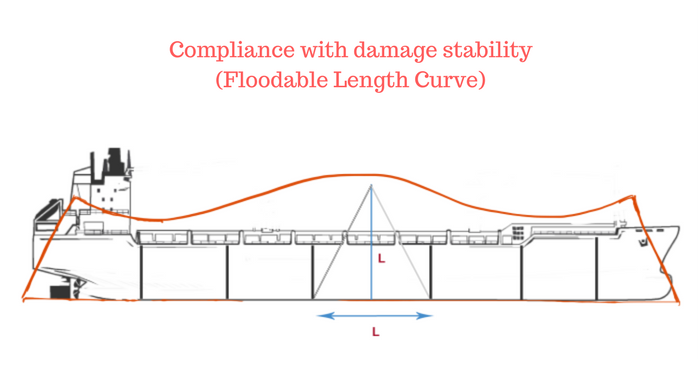

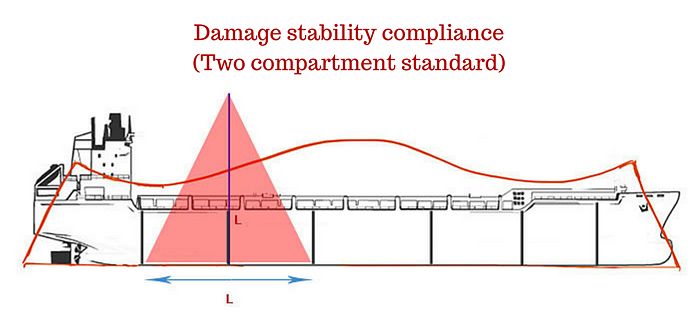

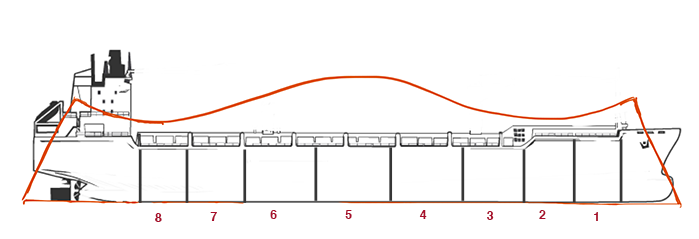
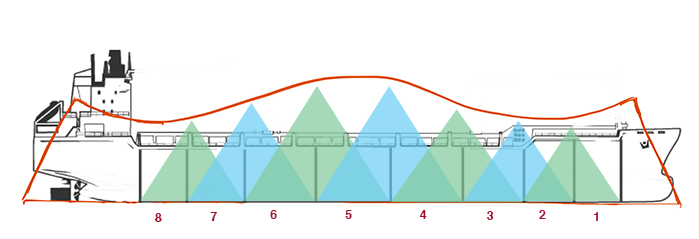

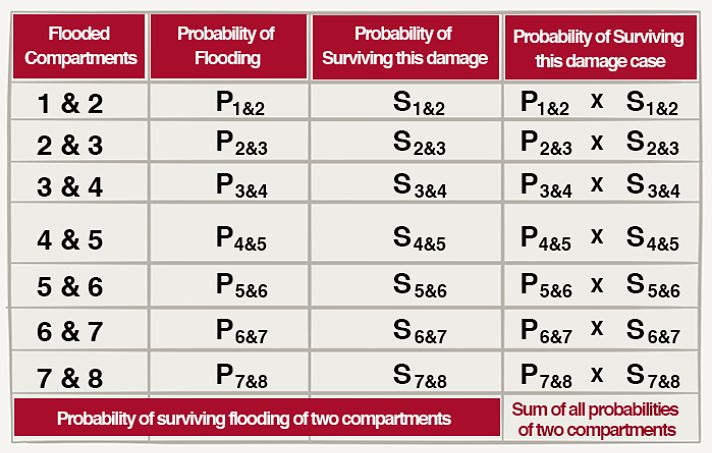



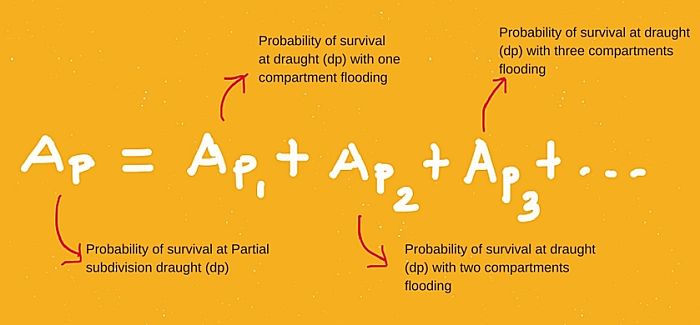






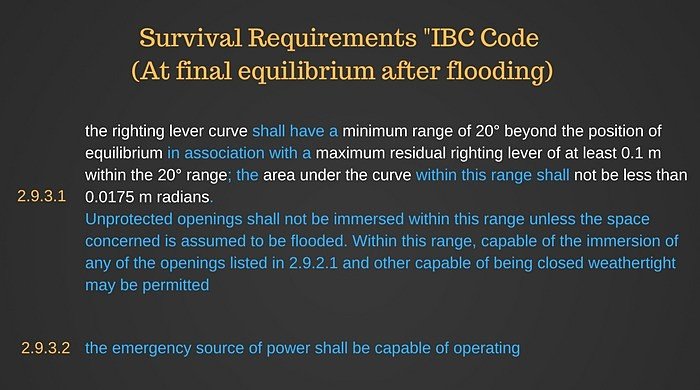
Wonderfully explained sir, I wish many more various topics from you as you always do the explanations in very different ways,example based, thanking you
Glad you liked it Indranil...